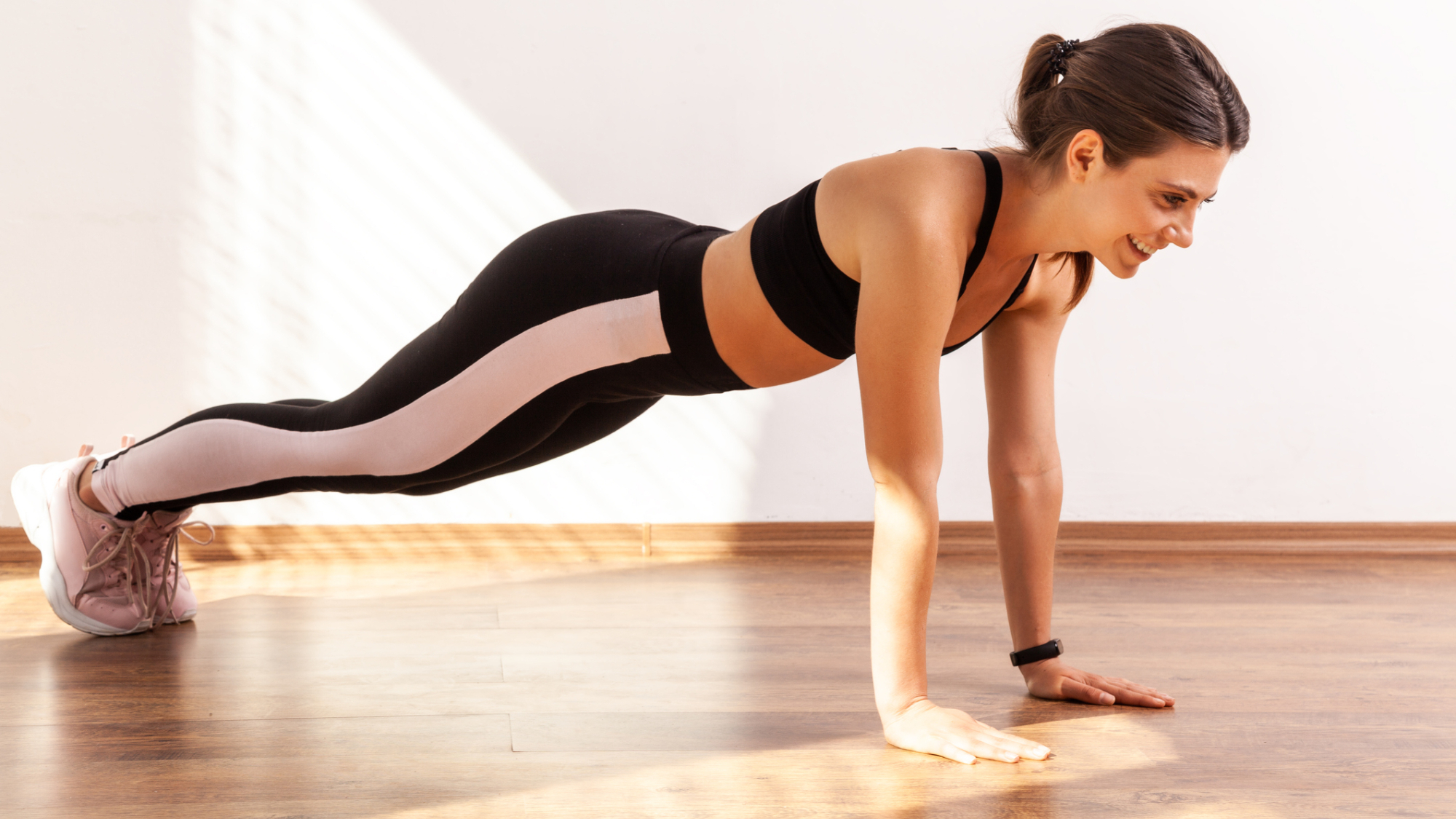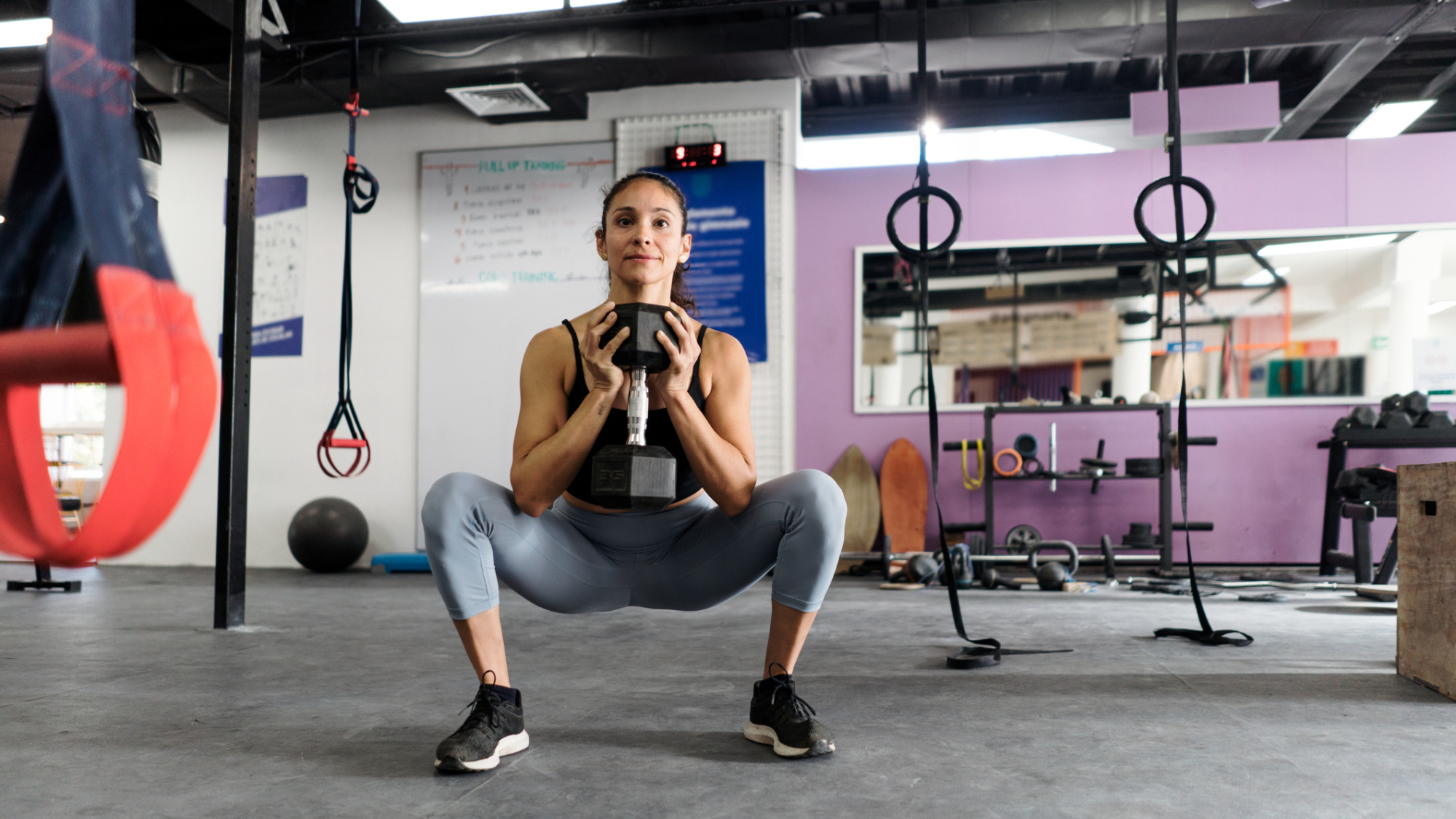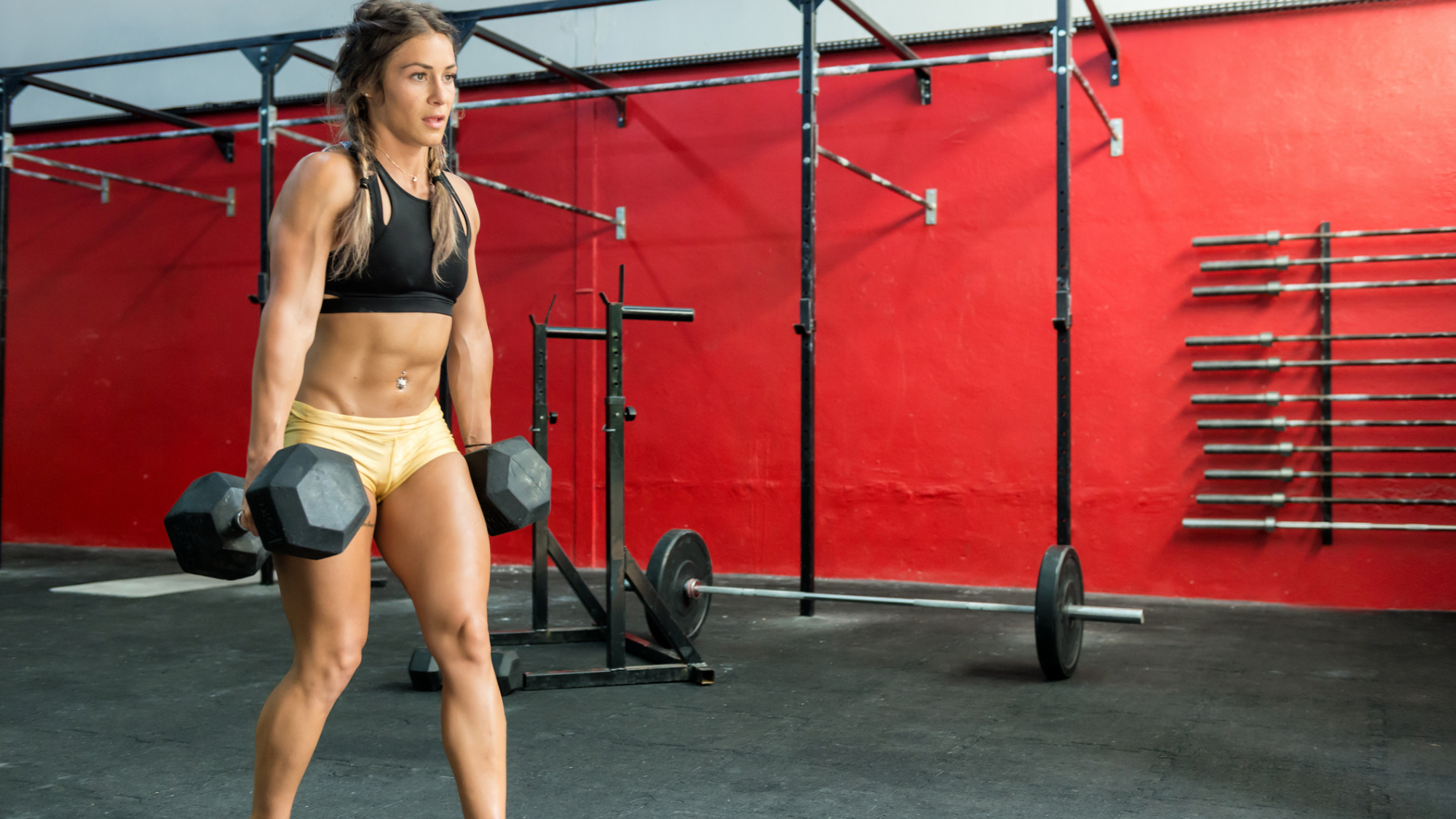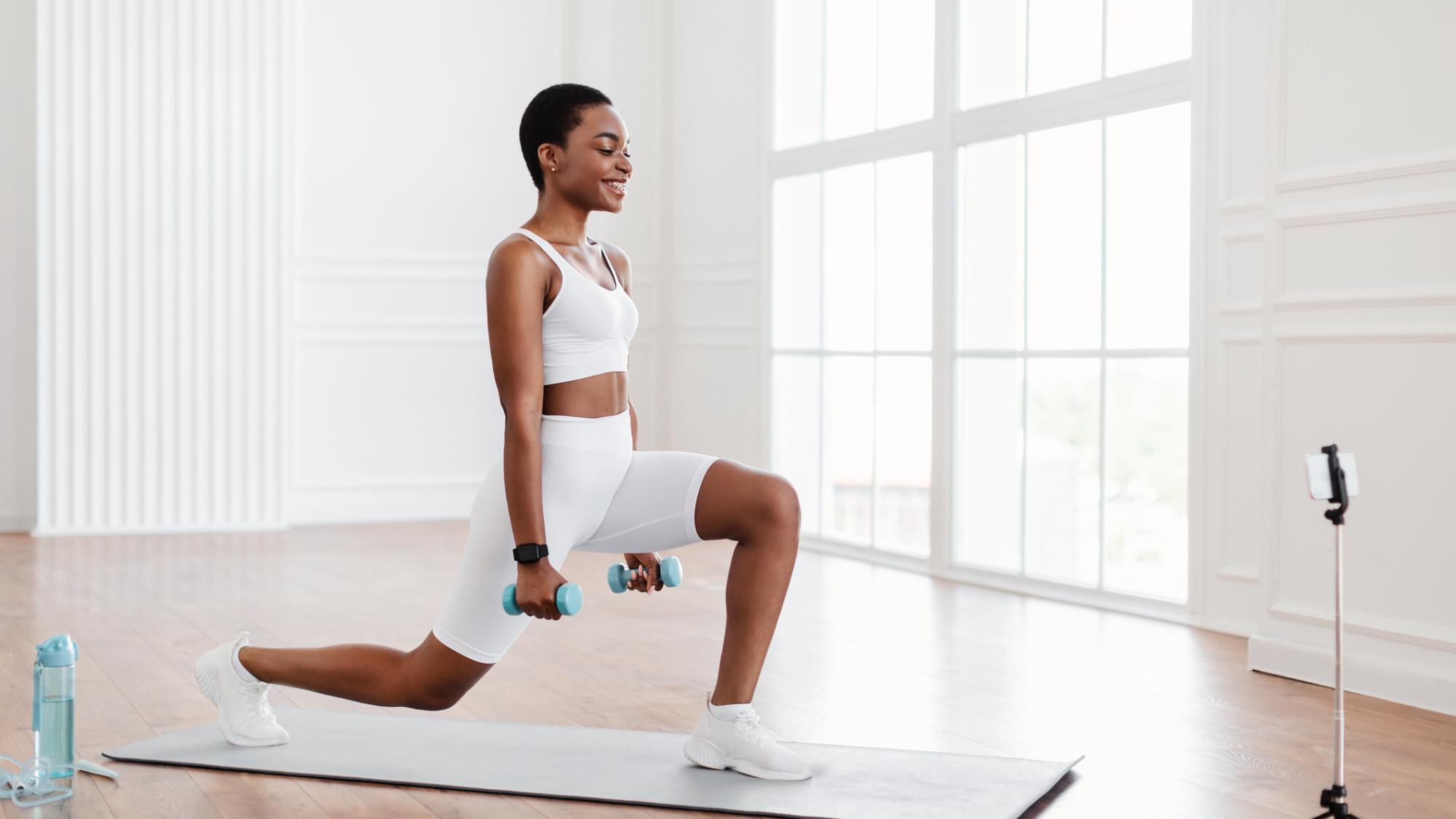This trainer's six-move workout builds muscle all over and boosts your mobility in just 18 minutes
Improve your balance, coordination and stability while fending off future injuries with this short strength training workout


Some people swerve strength training because they're worried about becoming too bulky. In reality, it takes years of lifting weights twinned with a lot of food to pack on serious size.
What's less well-known is that strength training is one of the best ways to better your mobility, boost your metabolism and improve your mood, all while bolstering your bones, joints and muscles.
If that impressive list of benefits has you ready to dip your toe in the strength training waters, this dumbbell workout from certified personal trainer Sarah Thorne will serve as the perfect introduction.
How to do Sarah Thorne's full-body workout
For this workout, you're going to need a set of dumbbells and a timer.
For each of the six exercises listed below, complete 45 seconds of work followed by 15 seconds of rest. Repeat this sequence for three total rounds to finish the workout.
- Commandos
- Goblet squat
- Step to shoulder press
- Plank
- Farmer's walk
- Alternating reverse lunge
Scroll down to see step-by-step guides on how to do each of the moves. And remember to warm up before you get started.
1. Commandos

- Start in a high plank position (as pictured above) with your arms straight, your hands on the ground directly beneath your shoulders, and your eyes looking at the floor just in front of you. Brace your core. Your body should form a straight line from the back of your head, through your spine and legs, to your heels.
- Keeping your core tight, lower yourself into a forearm plank position, dropping onto your elbows one arm at a time.
- Push back up to a high plank position.
2. Goblet squat

- Stand upright with your feet a little wider than hip-distance apart and your toes pointed outward slightly. Either clasp your hands in front of your chest or hold a dumbbell for an extra challenge (as show in the picture above).
- Push your hips backwards to initiate movement, then lower your hips as if you were sitting down on a chair behind you. Your spine should stay straight throughout, and your chest should be facing forward.
- Lower your hips until your thighs are slightly lower than parallel with the ground, then drive through your feet to return to the starting position.
3. Step to shoulder press

- Start in a kneeling position holding a dumbbell in each hand at your shoulders.
- Step forward with your right foot so you're in a lunge position.
- Drive through your right foot to get to a standing position and, as you do this, press the two dumbbells overhead.
- Lower yourself back to a kneeling position. Repeat this for 45 seconds, changing the leg you step forward with on every repetition.
4. Plank

- Lie face down on the ground. Brace your core then push yourself up so your weight is balanced between your toes and your forearms. Your elbows should be directly under your shoulders, and your back and legs should form a straight line.
For an easier variation, you can perform this exercise on your forearms and knees, rather than your forearms and toes.
Start your week with achievable workout ideas, health tips and wellbeing advice in your inbox.
5. Farmer's walk

- Hold a dumbbell in each hand. Keeping your arms relaxed and your steps at a steady pace, walk in a straight line. The dumbbells should stay close to the body. Make sure your core stays tight and your shoulders are engaged throughout.
If you are short on space, you can walk backwards and forwards with the dumbbells or march on the spot.
6. Alternating reverse lunge

- Start in a standing position, with your feet slightly beyond hip-width apart.
- Step your right foot behind you and lower your hips until both of your knees form roughly a right angle.
- Push through your front foot (the left foot) to return to a standing position, then repeat on the other side.
You can perform this exercise without weights, or hold a dumbbell in each hand for an extra challenge.
The benefits of Sarah Thorne's full-body workout
We've already explored why you should be weaving strength training into your exercise schedule, but this doesn't cover every benefit this session has to offer.
"This is a quick, simple strength-based workout that can be done anywhere, any time," says Thorne. "It focuses on [developing] global mobility, total body strength and endurance."
And that's not all. It also uses a mixture of multi-muscle compound exercises, both bilateral and unilateral, to challenge your body to move in different ways.
Bilateral exercises like goblet squats challenge you to move symmetrically. This way, your right and left limbs have to complete the same amount of work, and can join forces to help you lift more weight.
Unilateral exercises, on the other hand (or leg, should I say?), work one side of your body at once. For example, for the alternating reverse lunges your legs take it in turns to do the bulk of the work.
"These exercises force one side of the body to stabilize and maintain control while the opposing side performs the movement," says Thorne. It's one way of addressing muscular imbalances and improving your balance.
She also adds that they can "challenge the body's stability, control and movement, which will in turn improve your overall function and performance as well as reduce the chance of future injury".
Need help choosing your next weights? Our guide to the best adjustable dumbbells can help

Harry Bullmore is a Fitness Writer for Fit&Well and its sister site Coach, covering accessible home workouts, strength training session, and yoga routines. He joined the team from Hearst, where he reviewed products for Men's Health, Women's Health, and Runner's World. He is passionate about the physical and mental benefits of exercise, and splits his time between weightlifting, CrossFit, and gymnastics, which he does to build strength, boost his wellbeing, and have fun.
Harry is a NCTJ-qualified journalist, and has written for Vice, Learning Disability Today, and The Argus, where he was a crime, politics, and sports reporter for several UK regional and national newspapers.